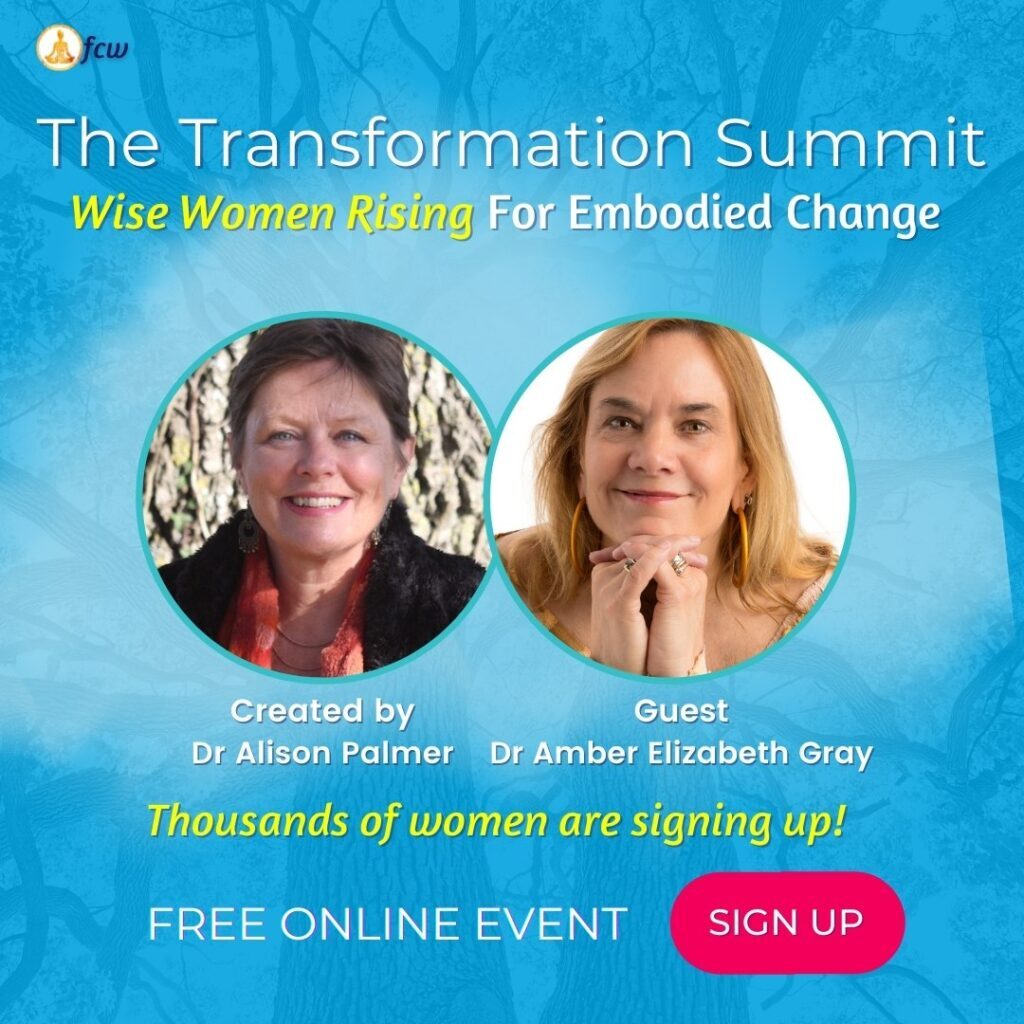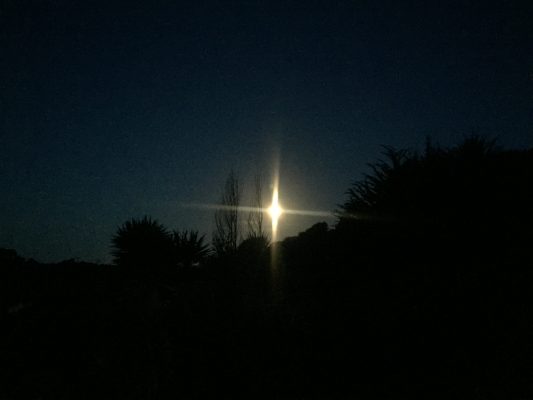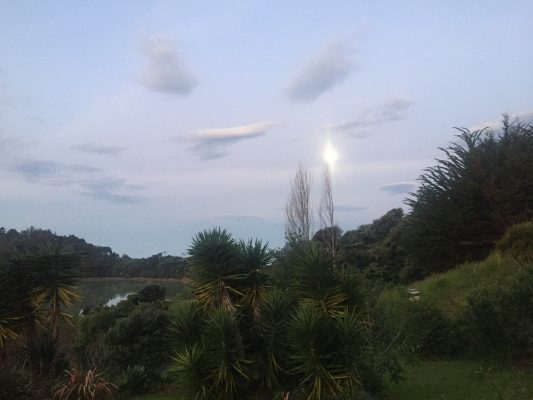
“Cross Cultural Dance/Movement Therapy” on The Creative Psychotherapist Podcast
Listen to “Cross Cultural Dance/Movement Therapy” with Dr. Amber Gray on The Creative Psychotherapist podcast.
Dance Therapy Today: An Overview of the Profession and Its Practice Around the World
Published in Creative Arts in Education and Therapy – Eastern and Western Perspectives – Vol. 7, Issue 2, December 2021.
The Nishant Garg Show
Listen to Amber on The Nishant Garg Show:
Somatic Expeditions Interview
Click here to listen to the interview with Dr. Amber Elizabeth Gray.
Voices of Continuum
Amber is interviewed about Continuum, sacred lineage and wild spaces by her dear friend and Continuum colleague, Sylvain Meret.
Interview on #ORadio
Ostrolenk speaks with Dr. Amber Elizabeth Lynn Gray, an award winning dance/movement therapist and a somatic/human rights psychotherapist. Dr. Gray has worked for many years with people who have survived human rights abuses, war, and torture. Dr. Gray details how various educational and career experiences, and ultimately her time in Rwanda, drove her decision to pursue her degree in Somatic Psychology and Dance/Movement Therapy. Dr. Gray details her creation of Restorative Movement Psychotherapy, a clinical counterpart of the Poto Mitan (Haitian Creole for “Center Post/Place) Trauma and Resiliency framework, and how her experiences have evolved her view of the body politic and the ways in which we dehumanize the body. The intersection of spirituality and science, of humans and the Earth, and humans and animals are a few of the spaces in which Dr. Gray is increasing her work.
Finding Ground in the Swirl with Amber Gray // Passing 4 Normal Podcast
Amber shares about her Ground in the Swirl series on Sharon Weil’s Passing 4 Normal Podcast. Listen here.
Embodiment, Collaboration, and Social Trauma // Creative Therapy Umbrella Podcast
Partnership with local wildlife relief organizations in Australia
Santa Fe New Mexican article on TRI’s partnership with local wildlife relief organizations in Australia.
PHOTO CREDIT: Olivia Harlow/The New Mexican
Amber Gray & Trauma Work
The Dark Edges of Light
Sa nou pa we: the ever-present unseen. This concept in Vodou speaks to the existence of everything we see, and all that we do not see. It speaks to the potent balance of light and dark, day and night, bright and shadow. Early in the initiation process, the initiate will spend time contemplating a candles light, in a completely dark environment. Next time you see a lit candle look at the flame for awhile. The flame has a dark outline encircling the candlelight. The depth and hue of the dark edge changes and transmutes as the light flickers and dances. It disappears if the light goes out. This dark edge is where light and dark meet. It always exists, somewhere in the world, whether seen or unseen.
This juxtaposition of dark and light is core to the Haitian tradition known as Vodou. Initiation is an acknowledgement that we, as temporary incarnation in a physical, human form, are essentially spirit, and light, in a material body. That we only see the external human form is part of daily spiritual practice. Our internal world is a dark space where we are always incubating and gestating the emergent and the new. We are literally birthing that which will meet the light, in the depths of the dark.
Vodou recognizes the potent and life serving connection between human life and the natural world, as well as the connection between the physical (human and natural) world and the spirit dimension. Simply put, humans mirror nature and nature is perhaps the most clarifying mirror to reveal who we are as humans, individually and collectively. Sacred movements in Vodou mirror the movements of nature, for example, the circling of the sun and the moon, the rise and fall of the day and night is the same as the opening and closing of our eyes. In the words of anthropologist Maya Deren (1953), the first westerner to document Vodou ceremony:
If the earth is a sphere, then the abyss below the earth is also its heavens; and the difference between them is no more than time, the time of the earth’s turning. If the earth is a vast horizontal surface reflecting, invisibly, even for each man his own proper soul, then again, the abyss below the earth is also its heavens, and the difference between them is time, the time of an eye lifting and dropping. The sun-door and the tree-root are the same thing in the same place, seen now from below and now from above and named, by the seer, for the moment of seeing (1953).
Each breath represents our ongoing exchange, inner and outer, with the universe. Nature mirrors us as a meeting place of light and dark. Our own bodies, existing in the physical plane, and because of our ability to stand and move in the upright dimension, becomes the vertical axis, the Poto Mitan, or axis mundi, between heaven and earth. The Poto Mitan is the center-space that is always present in ceremony. The circular Peristyle is the ceremonial place, and the Poto Mitan penetrates its circle at the deep center. The Poto Mitan is not, however, limited to ceremony; it is ever present. Its center point, the intersection of the world of Spirit (vertical) and the world of humans (horizontal) is the crossroads (Kayfou in Kreyol), “the metaphor for the mirrors depths….” (Deren, M.,p. 35). We can actually encounter the crossroads at any moment; and it is through our ongoing and daily communication with our own Universal Soul (in Vodou tradition, our connection to the Spirit world) that we both as individuals and as a collective body are in dialogue with the world of “L’Invisib” (the invisibles, unseen, or Spirit).
Both the winter and summer solstice are an opportunity to reflect on these Vodou teachings. In these days of longer dark, the natural world and spiritual realms are gestating the light. The spirits will often show up in the movements of nature, and so our own physical and global movements reflect and mirror Spirit. This is how our Universal Soul expresses itself, through us. This is how we mirror Spirit, the unseen, and therefore—anything and everything that exists in darkness, even if only for a moment. Honoring the winter solstice through recognition of, and willing connection to, our own inner darkness, shadow self, propensity for dark (and even dark acts that may be perceived as wrong-doing), we honor our own capacity for growth and life through hibernation and gestation. Many people resist or resent the darkness; in Vodou, our ability to be in and with the darkness is the most potent time for self-development and growth. We may not see the external, but we are still present in another form, just as daylight on one side of the earth marks night-time in another. To celebrate and be with darkness is to honor the most potent creative space for cultivation of self purpose and knowledge. This knowledge is not book knowing; its Konysans—the deep knowing of the body based on eons of ancestors, our literal bio-chemical composition as shared with the natural world, and the reality of the human body as a temporary (individual) and eternal (collective) axis mundi to divine, mirror, and reflect the sacred.


Full Moon Rising & Dusk at Delaware Bay, Nelson, NZ
References
Deren, M. (1953). The divine horsemen: the living gods of Haiti. Kingston, N.Y.: McPherson & Company
Day of Gratitude Blog
Day of gratitude. Beneath and beyond the mythical tradition of a Thanksgiving meal (see my post last night regarding the untold history of this time), I welcome today as a day of reflection and gratitude.
My reflection begins with something that happened many times on my recent trip to Sri Lanka. Many hotels, restaurants and stores in Sri Lanka have a security person stationed there, to check your bags. I noticed that in large hotels, everyone had to pass trough the airport-like machines. In smaller stores and restaurants, my Sri Lankan friends would get checked by the person whose responsibility it was to check. I was not.
So, I offered. I went up to each grocery store security guard and asked if they needed to check my bag. Mostly, they peeked in, smiling and shrugging with what appeared to me to be a bit of embarrassment. I offered: “I am happy for you to check my bag.”
Flash back to a photo I posted in April, 2016, of me wearing a pink tank top I made that says “I just look legal” (re-posted here). At the time, I had recently learned of Sergio Romo’s infamous “I Just Look Illegal” t-shirt appearance (google it), which a friend told me was partially in response to a professional athlete of color who was beaten up due to racial profiling. I cannot find that story any more, and don’t know if that was the impetus for his t-shirt. Regardless, Romo is the son of Mexican immigrants, and his t-shirt stirred a lot of speculation and reflection on his meaning for wearing it.
Sergio’s story sparked my pink t-shirt, and this relates to what I am grateful for today:
Privilege.
Grateful, and conflicted.
I created the “I Just Look Legal” t-shirt and hoped that by posting it on FB, it would encourage other dominant culture people, with privilege, to make a similar t-shirt. That did not happen, perhaps due to my ignorance of social media and how to use it. Perhaps also, because its damn hard to own up to privilege and to willingly pick up part of the burden on creating equality and inclusion for all.
Why is the burden always on people of color to prove that they are “ok?” When are those of us (predominantly white in the USA) with privilege going to step out and take some risk and name that our skin color and privilege does not automatically mean we would never do something illegal; something that breaks the law? That you might want to check our bags, too? When are we going to pick up some of the weight of racism, fear, profiling and oppression and boldly name that white, or dominant culture, doesn’t always get to be excused. That assumptions about intelligence, integrity, and ability to succeed don’t belong more to us than to anyone else. We are all equally capable of violence, ignorance, and “illegality”. Many of us have done something “wrong”, and gotten away with it, because we look “ok.”
I am grateful for the privileges I have had that have shown me this world. Made it easy for me to move freely, to stay safe, to be included. And I am conflicted that I carry that privilege because we with privilege are not all doing enough to minimize the power differential it creates. That the story of a first meal between would be colonizers and genociders, and the people native to this land, is still dominant history is proof of this. Even if that first meal was a happy occasion, the “ever after” did not go so well for Native Americans.
My Thanksgiving prayer: That everyone with power use that power to pick up a piece of the burden of equality and inclusion; carry it, wear it, and name it, out loud.
Amber Elizabeth Gray on Continuum & the Creativity of Health
From Darfur, Kosovo and Haiti to her clinic in New Mexico, Amber Elizabeth Gray has become a human rights psychotherapist, merging dance therapy and Continuum in her recovery work with refugees. Produced by Watermark Arts for the “Continuum & Creativity of Health” interview series.
“Creative Arts Therapies with Refugees”
Amber’s chapter “Creative Arts Therapies with Refugees” is in Refugees and Asylum Seekers: Interdisciplinary and Collaborative Perspectives, edited by S. M. Berthold and K. R. Libal.
You can find the book here.
“Body as Voice: Restorative Dance/Movement Psychotherapy with Survivors of Relational Trauma”
Amber’s chapter “Body as Voice: Restorative Dance/Movement Psychotherapy with Survivors of Relational Trauma” is in The Routledge International Handbook of Embodied Perspectives in Psychotherapy.
You can find a copy here.
Amber on “The Trauma Therapist”
Listen to this podcast here.
“Roots, Rhythm, Reciprocity: Polyvagal informed Dance Movement Therapy for Survivors of Trauma”
Amber is one of the featured clinicians who writes about her polyvagal-informed movement therapy in Dr. Stephen Porges’ latest book.
You can find the book here.
Survivors of Torture Create Dances of Freedom
“Mind Your Body” Episode ft. Amber Gray
Let’s dig into the science behind dance/movement therapy as a highly effective & suitable treatment choice for trauma survivors. In this episode, Amber Gray talks about her collaborative work with “Distinguished University Scientist” Stephen Porges, who discovered the Polyvagal Theory.
Publication in “Currents”, the BMCA Journal
Amber’s publication “Dancing the Wild Home”, is in the 2018 edition of Currents, the BMCA Journal.
Amber’s speech makes the news
Amber’s speech at Senator Heinrich’s Unite Event in Albuquerque makes the news.
Amber on “The Embodiment Podcast”
Listen to Amber on The Embodiment Podcast.
Experienced dance movement and trauma therapist Amber joins Mark to discuss humanitarian work, polyvagal theory, state sharing, self compassion and self care when you work with trauma, the new trauma rock stars, humour, and not wearing kid gloves. We also discuss simply “what works” in trauma, and offer practical trauma-related tips for any embodiment professional.
“Polyvagal-informed Dance Movement Therapy with Children who Shut Down”
Amber’s chapter, co-authored with Dr. Stephen Porges, “Polyvagal-informed Dance Movement Therapy with Children who Shut Down”.
You can find the book here.
Polyvagal-Informed Dance/Movement Therapy for Trauma: A Global Perspective
Click here to read Amber’s publication on Polyvagal Informed Dance/Movement Therapy.
Meeting Emilie Conrad and discovering Continuum Movement
Amber shares her experience of meeting Emilie Conrad and discovering Continuum Movement.
Watch now on YouTube.
Podcast: A Tool Kit for Post Election Distress Syndrome with Amber Gray
Have you felt immobilized by the results of this presidential election? Shut down? Off-balance? Somatic psychologist, Amber Gray, talks with Sharon Weil about how terror and fear affect the body, creating either a shutting down response or an impulse towards fight or flight action. She provides essential and helpful insight and tools for finding calm, restoration, and a return to mobility and social engagement after difficult events. These tools apply to any stressful, shocking, or life-altering change. Listen and find comfort in her words.
We are the Movement: Continuum Movement as Somatic Psychotherapy
Read Amber’s publication on Continuum Movement, Somatic Psychotherapy and Trauma in Somatic Psychotherapy Today.
More publications
For a list of Amber’s older publications, click here.